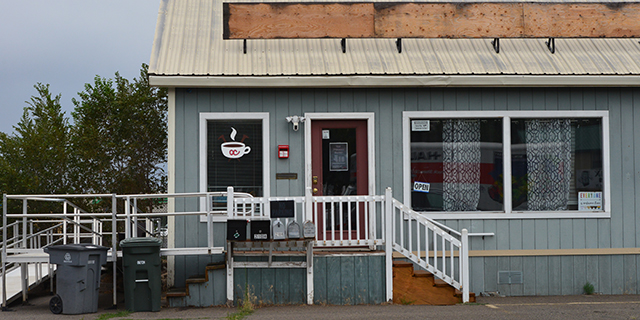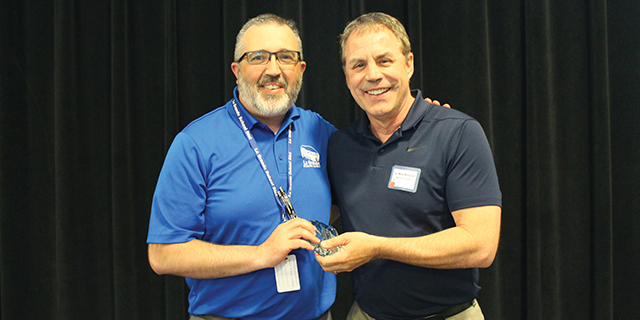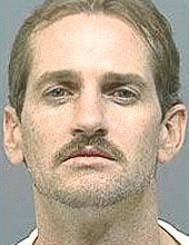WESTFALL
Published 12:00 am Friday, September 20, 2002
By Mark Highberger
It’s one of the last frontier towns in Oregon, a place where the pavement ends and the lonesome begins, and time is measured by the work of the seasons: calving, irrigating, haying or herding. And even though its buildings are empty and its streets deserted, Malheur County’s high desert community of Westfall can show you one of the most sparkling sweeps of sky and space in the Northwest.
"To really know the Westfall country, one should see it from the back of a horse," Earl Smith wrote in 1962, the year Westfall was the smallest incorporated town in the United States. (Population: 3.) Mr. Smith’s recommendation is probably based on the fact that coaxing a horse across rimrock and through sagebrush gives you a step-by-step unfolding of countryside.
For horse-less folks, however, a slow wander by car or bicycle will probably do just fine. And the slower the better. "Slower than cold molasses" is the way they might have said it back in the days when Westfall was a ranching and homesteading center. Around here, you can’t be in a hurry to get anywhere, for there is no place to go. This can do wonders for your perspective.
Getting there means traveling Highway 20 from either Vale or Juntura, following the winding canyon and the willowy banks of the Malheur River through country lying open and bare except for its sage and rock. Lava flows built this land; river water carved it. The result is a land of valleys and plains, of basalt-capped hills and rim-rocked canyons.
In one of those valleys is the town of Harper, where a north-pointing sign tells you Westfall lies 12 miles away. (Actually, most of the signs along the way give you this same 12-mile message, right to the edge of Westfall itself.) From Harper the pavement runs past chalky cliffs, rolling hills, and grazing cattle. The land is marked by dry gullies and rocky ledges, the sky by ravens swooping past pinnacles standing jagged against a blue span of desert sky. "It looks like the set from an old Western movie," is how a recent traveler describes the route.
On the edge of Westfall is Bully Creek, a stream in the desert, the life of the valley, and one of the reasons people settled here. First among these was Levi Westfall, who rode into the area in 1870 and found himself in a land virtually untouched by either cows or plows.
"It was still the hunting grounds of the Paiute, Bannock and Shoshone Indians," says Nelora Jordan, whose husband’s family has lived in the area for more than 100 years. "Cottonwood, willow and alder trees lined the creeks, sagebrush covered the flats and rolling hills, and junipers dotted the rocky bluffs that surrounded the valley."
That description fits what you’ll find today with one exception: the town of Westfall itself. From a distance, a line of poplar trees marks its location; up close, a cluster of age-battered buildings bares its history.
Although a post office was established in 1882, the peak years of that history begin with the incorporation of the town in 1893. Soon after, more homesteaders settled, and Westfall became an important stop for stagecoaches and freight wagons traveling between Ontario and Burns. By 1910, more than 350 voters were casting ballots in elections, and 140 people were living in town.
"It was a pretty good-sized town," Mrs. Jordan says. "It had ranches and schools here and there at least six schools at one time and quite a business district, some 50 buildings."
It seems Westfall had a way of growing on people. Mr. Smith described the feeling this way: "There in the shade of a great cottonwood lie flat on your belly and stick your face down deep in the pure cold spring water, drink and drink, and then roll over and look up into the deep blue sky. It makes one feel as if he could stay there forever."
But for the town itself, the end of forever began in 1913. That’s when the railroad stretched out alongside the Malheur River from Ontario and reached Harper. Folks from Westfall began hauling their homes and businesses the buildings as well as their contents to Harper. The town withered but hung on.
"In the old days," Mr. Smith writes, "we gazed on life from behind; it was ahead of us and everything seemed rosy, and if it did not pan out as we expected, there is nothing to be done about that, either."
Then came a war, then depression, then drought, then another war. Each wore away at Westfall until "the old timer coming back wouldn’t know his own country." The final blow landed when the community surrendered its school, consolidating with Harper in 1961. What’s left of the old town, leaning and graying in the sun, includes the schoolhouse, a dance hall, the jail, a store, and some houses.
"It is rather sad," Mrs. Jordan writes in her history of the area, "to come upon the tumble-down buildings, cellars and corrals that were once the dreams of the future for these hardy people."
Yet it’s the sagging porches and the tattered roofs, the peeling paint and the crumbling chimneys that hold the memory of the Westfall that lives in the past. On the edges of town, the school’s merry-go-round waits for a push; the jail, for a Saturday night spree; a two-story house built of native stone, for its 100th birthday celebration.
And even though Westfall’s 1962 population has dropped by three, the rumors of its demise just as Mark Twain said about the reports of his death are exaggerated. "More than 20 mailboxes are still in use," says the woman who runs the post office, the town’s last occupied building.
Here at the post office you can hear stories of the old days, meet families coming in for their mail, and get directions to the labyrinth of roads that lead into the desert. "But you’d better have a sturdy rig and lots of gas and time," says a woman who lives down one of these roads.
This remoteness, when combined with the fact that almost nobody knows where it’s located, makes the detour to Westfall an adventure. But it also makes the future of the area cloudy, for the country is even more sparsely settled now than it was a century ago. "Only a few families remain," says Mrs. Jordan. "All the other ranches have been either sold or bought up to make larger ranches."
More than 30 years ago, Earl Smith concluded his history this way: "The story of the Westfall country is finished, the story of the people I knew and the story as it has been told to me."
Turns out that story isn’t finished after all, not as long as Westfall stays around for those of us who have gazed on life from behind, and who now want to slow down, turn around, and catch a glimpse of what we might have missed.





